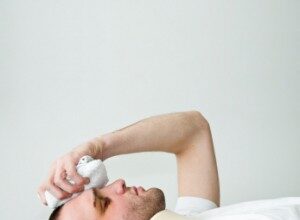Regular health checkups are an important part of staying healthy. By getting regular checkups, you can catch any health problems early on and prevent them from becoming worse. Here are six regular health checkups that you need to get.
1. Dental exam
Regular dental check-ups are important for everyone. During your check up, your dentist will clean your teeth, look for signs of cavities or gum disease, and take x-rays.
Catching dental early disease is important because it saves you from complicated and expensive procedures, such as a root canal treatment (RCT). You can learn more about RCT here.
2. Blood pressure checkup
High blood pressure (hypertension) can lead to heart disease, stroke, and kidney problems. By getting your blood pressure checked regularly, you can keep it under control and reduce your risk of developing these health problems.
Unfortunately, high blood pressure is a silent killer and often has no symptoms. That’s why it’s important to get your blood pressure checked regularly, even if you feel healthy.
Blood pressure screening is recommended once a year for people over the age of 40 or with risk factors for primary hypertension. These risk factors include a positive family history, advanced age, obesity, smoking, high-sodium diet, and physical inactivity.
If you are under 40 years of age, you should be screened for hypertension every 3-5 years.
Hypertension screening is usually performed at a doctor’s office, and a diagnosis is made if you have high blood pressure on at least two readings obtained on at least two separate doctor visits.
3. Cholesterol checkup
Just like high blood pressure, high cholesterol can also lead to heart disease and stroke. And it’s another silent killer because it often has no symptoms until it’s too late.
This is why it’s important to get your cholesterol checked regularly. This is done via something called a lipid profile, which is recommended for all individuals between 40 and 75 years of age. However, there is no defined frequency for a lipid profile.
It’s also important to understand how to interpret a lipid profile. On a lipid profile, you’ll find your total cholesterol, LDL (bad) cholesterol, HDL (good) cholesterol, and triglycerides.
You want your total cholesterol to be less than 200 mg/dL, your LDL to be less than 100 mg/dL, your HDL to be above 40 mg/dL, and your triglycerides to be less than 150 mg/dL. Learn more about the ACC and AHA’s blood cholesterol guidelines here.
If any of these values are abnormal, you may need to make changes to your diet and lifestyle and/or start taking medication. The most important parameter to look out for here is LDL, as this is the type of cholesterol that can build up in your arteries and cause problems.
If your LDL is high, you’ll require a class of drugs called statins to bring it down.
4. Diabetes checkup
If you have diabetes, it’s important to get regular checkups to help prevent complications. These include kidney damage, nerve damage, heart disease, stroke, and foot problems.
During a diabetes checkup, your doctor will likely test your blood sugar levels and A1C (a measure of your average blood sugar levels over the past three months). They may also check your feet for any problems and test your urine for protein.
Regular diabetes checkups are also important for preventing diabetic ketoacidosis (DKA), which is a life-threatening condition where blood sugar gets too high.
In addition, you should consider getting a blood sugar test even if you have no symptoms but are over 45 years of age. People under 45 years should get screened for diabetes only if they are obese and have one of the following diabetes risk factor:
- Positive family history
- Hispanic, African American, Native American, Asian American, or Pacific Islander ethnicity
- Physical inactivity
- History of heart disease
- High blood pressure
- Elevated blood cholesterol
- Polycystic ovary syndrome
5. Cancer screening
There are many different types of cancer, and not all of them have symptoms in the early stages. That’s why it’s important to get screened for cancer regularly.
Depending on your age, gender, and family history, you may need different types of cancer screenings. These may include mammograms, Pap smears, colonoscopies, or prostate exams.
A mammogram detects breast cancer, while Pap smears are used to screen for cervical cancer. Similarly, colonoscopy can detect colorectal cancer, which is the third most killer among cancers. Prostate exams are used to screen for prostate cancer, which is particularly common in elderly men.
You should get a pap smear every three years from the age of 25. In case your doctor decides to co-test you for cervical cancer, which includes a pap smear and human papilloma virus (HPV) DNA testing, you’ll get a pap smear every 5 years.
Regarding breast cancer, you should get annual mammograms and breast exams after 40 years of age, according to the American College of Obstetricians and Gynecologists. This is especially important if you have risk factors for breast cancer, such as a positive family history, BRCA mutation, or a history of radiation to the chest.
Finally, a colonoscopy is usually recommended every 10 years after you hit 50 years of age. If you have a first-degree relative with a history of colorectal cancer, you should begin screening at 40 years of age or 10 years before the age your relative was diagnosed with cancer. Here’s how you can lower your risk of colon cancer.
6. Eye exam
Last but not the least, eye exams are important for maintaining healthy vision. But they can also help detect other health problems, such as diabetes, hypertension, and high cholesterol.
During an eye exam, your doctor will check your vision and look for any signs of these other health problems. They may also dilate your pupils to get a better look at the back of your eye.
Eye exams are important for everyone, but they’re especially important if you have a family history of eye disease or diabetes.









